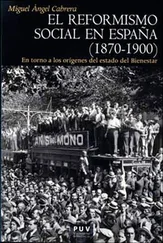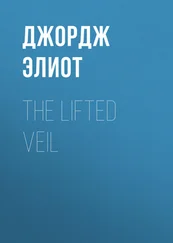Paradox is a key element of the analysis of Barber’s autobiographies and fiction, both when considering their content and from the point of view of the genre. Belonging and traveling; searching but not finding; asking but not answering, are all duplets that reveal tensions in the evaluation and definition of her literature. In this sense, her style is full of questions that reveal her notion of literature as a tool for constant search that may finally be attained as an incomplete action. In my opinion, those questions not only reveal the spirit and position of Barber as an author, but they also offer a consequential re-definition of autobiography as a genre, and they act as a powerful scenario in which Mormon culture and the American West—both as place and ideal—can be approached with an invitation for penetrating criticism. Denis Cosgrove and Mona Domosh say that “[W]e make sense out of the world in the only ‘rational’ way: from our own experiences” (Cosgrove 37). Consequently, Barber tries to understand the world from a small place within it. The different topics that she develops in her fiction; the personal experiences that she describes; the diverse traditions and customs that she portrays; the multiple scenarios that she provides for her characters—all these topics, experiences, cultural elements and places—are sourced from a singular space: the Mormon community. But as Richard Dutcher says: “[T]he more unique the story and its characters, the more universal its appeal” (Bigelow 8). Eugene England does also share this perception: “The only way to the universal is through the particular” ( Dawning 133). Barber goes beyond the limitations and invites us to grow intimate with the elements of her fiction. Barber illustrates through her narrative how different yet alike we all are.
In her literary search for identity, Barber’s autobiographies uncover a complex relationship with the Church, both from a social approximation and in relation to her faith, when she allows risk and adventure into her life experience. This forces the reader to reflect on a wider concept of identity when considered as a social construction since she herself invites the reader to connect her own self-definition to that of her community after making so many references to Mormonism. Her example, even if it is not an attempt to offer any statement, draws on the motivation to complicate definitions of Mormonism. Jack Harrell points out that Mormon writers have to avoid what he calls “Mormon optimism,” basically, what Terryl L. Givens calls “affirmation of absolute certainty” ( People 26), since in order to make stories workable, some conflict must be present (Harrell 86-87). In any case, both scholars share the same conviction that conflict does indeed reside in the very nature of Mormonism. 4Givens symbolizes it in the idea of the “paradox” (a term used by Eugene England as well) while Harrell uses “conflict,” but, in short, both point towards the possibilities derived from the inherent tensions between affiliation and individualism (Harrell 92) or the certainty provided by Mormonism in contrast to the idea of eternal progress and free agency (Harrell 95). Barber executes the conflicts that Givens and Harrell suggest, but she constructs this particular context in order to expand into universal provinces. Barber begins in and moves from the singular, personal experience—thus following Cosgrove and Domosh—but she expands to a wider embrace of the world.
Mormonism plays a significant role in the narrative of her autobiographies, and likewise much of her fiction makes explicit reference to Mormonism, but also where there is no direct reference to the Mormon Church, like in The School of Love , for example, God’s intermission still beams throughout the text. In “Criminal Justice,” a story at the end of this collection, there is a vision that can be interpreted both in religious and in secular terms. In fact, this bent is noticeable in all her works. In Parting the Veil , as I will try to show later, the veil parts but the parting has to be labeled as a miraculous intermission according to the personal reflection of the reader. However, going back to The School of Love , there is an inflection in these stories that makes the reader think about Mormonism: little details like quilting, geography, some vague spiritual, religious comments, the importance of family themes. This collection of short stories can be understood from a Mormon feminist perspective. Nevertheless, the feelings that Barber treats—and the way she treats them—denote a more universal perspective. Indeed, the author tries to blur the local and the global throughout the collection. Her stories contain a sense of the universal that makes the characters and their stories powerful and viscerally authentic.
When I talk about universality here, I am aiming at proposing a reinterpretation of religion on a personal and specific level (Barber with regard to Mormonism) and an expansion of conclusions in order to overcome the geographic, historical, cultural but also basically religious barriers. The term universal does not coincide with the widely accepted synonym, global. Global seems to pollute the concept with economic and political overtones, but, at the same time, the term universal seems to communicate an existentialist, essentialist value that can cause confusion in the context of this research. Global, in this context, evokes political or economic transformations of the Nation-State system that will not be considered in this analysis. Mormonism overcame a long time ago what could be called a Lockean process —John Locke being one of the founding figures of the idea of the modern State as aiming to separate the administration of political institutions from the influence of religion. In the aftermath of Brigham Young’s death, Mormon culture underwent a process of insertion into the American mainstream, thus abandoning the ideal of its first period in the Utah valley—during which the Mormons tried to isolate themselves to create a regime in which church and government were almost synonymous. Even though this process took place much later than its European equivalent, integration into the American mainstream can also be seen as a modernization that transformed and complicated the Mormon Church, so much so that right now Mormonism stands among those religions submerged in a multicultural reality. Nevertheless, those transformations often lead to the resurgence of national and cultural minorities that could be one of the objects of analysis in this book. The global would then be taken as a point of reference from which to consider the display of connectedness, relationships, and networks within different communities. This could be transferred to a literary analysis that occupies a space in Barber’s fiction. In fact, it would be a pivotal topic for discussion in Mormon literary criticism, both from an insider point of view and when conceiving Mormon literature as an object of research for outsiders.
Neil Campbell bases his new perspective of the American West on the idea that “places (and identities) have become less clear, blurred by a postmodern, transnational, global age of travel, digital communication, multinational corporations, and various complex mobilities” ( Rhizomatic 24). David Held states that difference and diversity are fundamental to achieving understanding between cultures (125). The very idea of individuality, from a cultural or social perspective, has been complicated by such new perspectives. We are subjects produced by cultural systems and traditions that equip us with certain codes of interpretation of life and death. These codes have, however, become refined through time. The institutions—the church among them—that were sources of certainty and definition, no longer operate as the sole interpreters of these realities. It is true, as Held reminds us, that today we possess the ability to begin to understand that those particular cultural systems, with their specific and individual sets of characteristics, are open to a wider, much more complex perception. This perception demonstrates that part of that cultural background that identifies individuals is accumulated (and combined) by different systems of values and cultural items superimposed one over the other, thus providing a basis for possible connectedness between different cultures in a process that not only enriches but becomes natural and inescapable (Held 121-127). Thus, the idea of universality does not imply that we need to assume arguments that hold valid for all people alike, but it confers, rather, a power that reaches and goes beyond natural limits—a power that arises after accepting the given and specific assumptions that are considered essentially true when communicated by an agglutinating language. Barber’s narrative space is thus transformed into something elastic in which the linguistic codes favor an easy movement—a sort of nomadism—a cultural transfer promoted by the deliberate aims of the author.
Читать дальше












